Hand in Hand co-founder to speak during World Economic Forum
Hand in Hand Co-founder Percy Barnevik is arriving in Davos, Switzerland next week to deliver an urgent message during the World Economic Forum Annual Meeting, a gathering of the world’s foremost political, business and other leaders.
Speaking at an event hosted by the Swiss Arab Network (SAN), a a non-profit association working to deepen economic and social ties between Switzerland and the Arab world, Barnevik will draw on decades of experience at the helm of Europe’s biggest companies, as well as his own philanthropic journey, to make an impassioned case for the role of grassroots entrepreneurship in eradicating global poverty. As the Swiss Arab Network’s charity partner, Hand in Hand will be raising funds for our programmes in Afghanistan on the night.
Omar Lahyani, the SAN president and co-founder, said: “We were absolutely amazed by the impact Hand in Hand has with its extremely efficient, cost-effective and sustainable model to fight poverty with jobs. It’s a great honour to welcome Percy Barnevik and learn, how he was able to build up his organisation to create over 1000 jobs per week. The Swiss Arab Nights will be an exclusive charity reception in our winterland oasis that is fully dedicated to Hand in Hand to create even more sustainable micro-enterprises and empower women to change the world.”
Held at the Rixos Flüela Hotel on Wednesday 23 January, the event will be attended by top CEOs, thought leaders, board members, public figures and members of the Swiss Arab Network, the Arab-Swiss Chamber of Commerce and Industry, the Swiss Business Council in Dubai, the Swiss-Asian Chamber of Commerce, and Switzerland Global Enterprise.
Hand in Hand Afghanistan: record expansion with UK aid from the British people
Hand in Hand Afghanistan is embarking on its biggest-ever expansion thanks to UK aid from the British people.
Funded by the UK government, the three-year, US $2.2 million grant aims to improve the livelihoods of 13,300 rural entrepreneurs in Sar-e Pol province. Some 9,500 microbusinesses and 13,300 jobs will be created.
“Now more than ever, government and civil society must work together for a safe, prosperous future in Afghanistan,” said Hand in Hand International CEO Josefine Lindänge. “This grant, our largest yet from a government partner, is a significant step in that direction.”
Hand in Hand is contributing an additional US $1 million to the project, bringing the overall budget to US $3.2 million. The funds come at a critical time. Last year, conflict killed 3,699 Afghan civilians and injured another 6,849 – a 22 percent jump from 2013, and the most since the UN began keeping records in 2009.
The causes of violence in Afghanistan are myriad and complex, but there is no doubt that poverty and joblessness play a crucial role. In a global survey conducted by the World Bank in 2011, 40 percent of insurgents interviewed said unemployment and idleness were their principle reasons for fighting. By providing business and skills training to thousands of Afghans, Hand in Hand and DFID are tackling poverty, and violence, at its roots.
For more information about the programme, please contact Programme Manager Agnes Svensson.
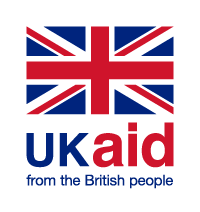
Worldwide media buzz for Hand in Hand member Frozan, 19
Late in March, Reuters profiled one of our members in Afghanistan: 19-year-old Frozan, who overturned convention and a lifetime of poverty to become the first young person in her village set up a beekeeping business.
Before long, Al Jazeera came knocking. Then the New York Post. Then BBC Persian, Russia’s Sputnik News and a whole host of others. When the dust settled a month later, Frozan had been featured by more than 100 media outlets worldwide, many in her native Afghanistan. It was, by some margin, our farthest-reaching media campaign yet.
The interest in her story, we believe, proves two things: one, our programmes are economically empowering young people in Afghanistan; two, the world is taking notice.
Thanks, Frozan, for sharing your success.
Read Frozan’s full story on the Reuters website
Hand in Hand partners with German government in Afghanistan
Imagine if during the 2015-’16 migrant crisis some 50 million people, not 3 million, arrived on Europe’s shores, hungry and desperate for work. Now imagine if Europe was one of the poorest places on Earth, lacking even the most basic services required to keep up.
That, proportionately, is the problem facing Afghanistan, the world’s largest source of refugees for more than three decades, which today faces the inverse problem: the world’s largest returnee crisis, with some 2.5 million people expected back in the country this year and next.
Last month, Hand in Hand partnered with Deutsche Gesellschaft für Internationale Zusammenarbeit (GIZ), the German government’s development agency, to help 500 such returnees and internally displaced persons work their way towards a prosperous, sustainable future in the country’s growing poultry value chain. The four-month project is, admittedly, a drop in the ocean. But by working with GIZ to tailor our programmes to the specific needs of returnees and IDPs, Hand in Hand is setting the stage for future work with this rapidly growing and chronically under-jobbed cohort.
By the numbers

Project budget: US $230,000
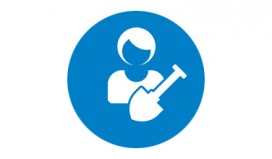
Jobs created: 500
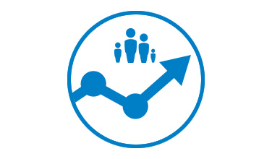
Lives improved: 2,875
Insights from Participatory Evaluation Processes: Adapting to Local Demands
This article previews Hand in Hand’s peer-learning session at the SEEP Annual Conference 2017. It first appeared on The SEEP Network blog
Your proposal was so scalable, it made USAID weep. Your logframe, so flawless it was exhibited at MoMA. Bono himself called to congratulate you on a “totally rockin’ independent baseline study”. But one year into program delivery, credit uptake is waning and dropout rates are creeping higher by the week.
What went wrong?
That’s the question new SEEP member Hand in Hand was forced to confront when two of our programs – one in Afghanistan, the other in Kenya – were threatened by similar issues. Despite more than 10 years’ experience training Savings Groups members how to launch their own microenterprises – resulting in more than 3 million new and improved jobs – we found ourselves humbled by an inescapable truth: nothing gets in the way of a masterfully designed program quite like reality. Adaptive management isn’t merely crucial to success – it’s necessary to survive.
This blog, and our session at the 2017 SEEP Annual Conference – ‘Insights from Participatory Evaluation Processes: Adapting to Local Demands’ on Tuesday, October 3 at 2:15pm – ponders a central element of adaptive management: feedback. In doing so, it posits a package of feedback mechanisms that can be (more or less) universally applied to produce useful learning, drawing on examples from the aforementioned cases, plus a third from VisionFund in Tanzania.
The learning that these mechanisms produced varied across contexts, but in each case the results were transformative, compelling Hand in Hand to redesign its theory of change and exit strategies in Afghanistan and Kenya respectively. Meanwhile in Tanzania, VisionFund applied a similar package of mechanisms during its pilot phase, and shares its experience of taking learning to scale.
The Big Five: Feedback Mechanisms for Useful Learning
Feedback is only as good as the sources that provide it. In order to obtain the fullest picture possible, our package of mechanisms draws on the following sources and methods:
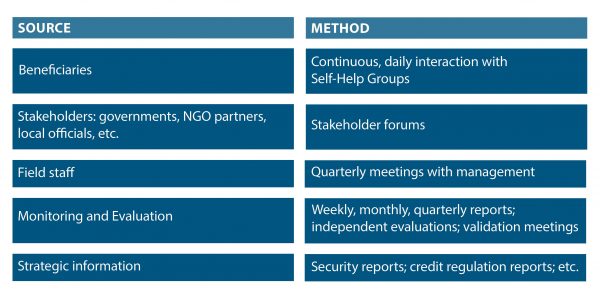
Each of the following cases employed our package of mechanisms. All have been edited for brevity. For the full picture, please attend our session on October 3.
Case One: Hand in Hand, Afghanistan
Occasionally, sources of feedback are in perfect harmony. Such was the case for Hand in Hand Afghanistan, who administered an Enterprise Incubation Fund (EIF) to finance members’ microenterprises where other institutions wouldn’t. Increasing numbers of beneficiaries said they were loath to take loans in remote rural areas where the Taliban had identified credit programs as an opportunity to disrupt NGO activity, branding them as a Western imposition. M&E data showing reduced uptake confirmed their waning interest. Other NGOs had by and large abandoned cost-recovery models in favor of flat-out grants, rendering microfinance even more unattractive. Field staff reported difficulties in recovering loans (and in some cases received anonymous threats). And strategic information pointing to a resurgent Taliban provided scant hope Afghanistan’s credit environment would improve anytime soon.
With all sources of feedback pointing in the same direction – decisively away from our microfinance component – Hand in Hand closed the EIF, adopting productive asset transfer in its place. In the time since, we have distributed some 21,300 Enterprise Startup Toolkits containing all the necessary inputs to launch a business in nine accessible, high-margin sectors such as beekeeping and tailoring, designed to maintain the self-help ethos that lay behind the credit component. Feedback has again been unanimous – this time in our favor.
Case Two: Hand in Hand, Kenya
Things would not be so straightforward in Kenya, where Hand in Hand’s EIF faced the opposite problem: it was too popular. Prior to October 2016, we provided three cycles of subsidized microcredit to members. Not surprisingly, beneficiaries were happy to continue borrowing at slightly below-market rates. But field staff complained they were overworked – tied to old members by cycle after cycle of credit while juggling ambitious recruitment targets for new members. The M&E data agreed: recruitment was indeed slowing down. Strategic information meanwhile pointed to a robust ecosystem of local MFIs, suggesting credit was available from other institutions.
Staff and management met in September, 2016 and immediately embarked on a set of program reforms, reducing the number of loan cycles from three to one. A 27-month phase-out strategy was also agreed, whereby groups would receive nine months of intensive training, 12 months for the EIF credit cycle, and six months of support on market linkages for commodities and loans. Finally, it was agreed that after 27 months, we would help mobilise members into co-operatives known as Community-Based Organisations that would help them lend to each other and gain access to bigger markets and value chains.
Initial feedback suggests the changeover is working favorably.
Case Three: VisionFund, Tanzania
From October 2016 until August 2017, VisionFund Tanzania, World Vision Tanzania and private sector grower/exporter the Great African Food Company (GAFCo) partnered to run seven pilots in different regions of Tanzania with more 3,000 smallholder sunflower and kidney bean farmers. The goal was to improve these beneficiaries’ outputs and, ultimately, their livelihoods.
Involving technology, crop insurance, loan credit processes, payment to farmers, and beneficiary engagement and education, the pilot was highly complex, and field staff reported challenges testing so many combined elements in a variety of locations. But partners had identified both a need and an opportunity: GAFCo needed to generate and test volume and quality for its European buyers, and there was an opportunity to test the approach in parallel across regions.
A major review took place in July 2017, following a review process experiment in June. Senior management from the three partners met with beneficiaries and external stakeholders, including village elders and local and regional government, as part of a 10-day M&E trip visiting each of the pilot locations and engaging in detailed conversations. The process resulted in identifying improvements in beneficiary education, explaining better to village authorities the detail behind areas such as crop insurance, and generating buy-in from local officials.
The model has now been adapted for a wider rollout from October, with an ongoing monitoring of the engagement with beneficiaries and other stakeholders to test the scalability and acceptability of the updated model and improvements in client training.

Hand in Hand creates 3 millionth job
Fourteen years ago, Percy Barnevik and Dr Kalpana Sankar joined forces to expand a small charity in southern India that provided free schooling to children working in the local silk trade. It was called Hand in Hand.
They soon realised the real problem wasn’t a lack of schools; it was the desperation that forced parents to send their children to the factories in the first place. “We had to attack the root cause of the problem: poverty,” says Barnevik.
Fast-forward to today and that’s exactly what Hand in Hand has done, fighting poverty with business and skills training from Afghanistan to Zimbabwe and in eight countries in between. Today, we’re proud to announce a major milestone in our story: the creation of Hand in Hand’s 3 millionth job.
“Even when they’re undernourished, downtrodden and illiterate, Hand in Hand’s entrepreneurs have an enormous will,” says Barnevik, now Hand in Hand’s honorary chair. “When they get a chance they’re not letting it go by. These women can move mountains.”
Here’s to fourteen more years, millions more jobs and more moved mountains.
Hand in Hand ‘extremely useful’ to socioeconomic situation: report
Hand in Hand Afghanistan’s programme in Samangan Province was “extremely useful to improving [the local] socioeconomic situation”, receiving “overwhelmingly positive” reviews from beneficiaries, according to independent evaluators.
That’s thanks in part to its “deeply localised design and implementation methodology, which prioritised existing dynamics, limitations and opportunities instead of transplanting projects and ideologies into the districts,” they said.
Launched in February 2014 with US $1.16 million in funding from European Union, the programme aimed to create 5,400 small businesses and 8,100 jobs over 30 months. Those targets, along with most others, were “met or exceeded”, according to the Green Growth Consulting Services report.
By the numbers
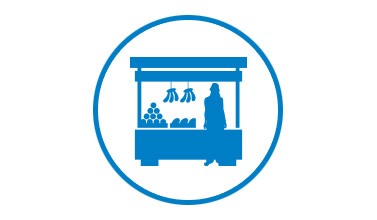 5,518 enterprises vs target of 5,400
5,518 enterprises vs target of 5,400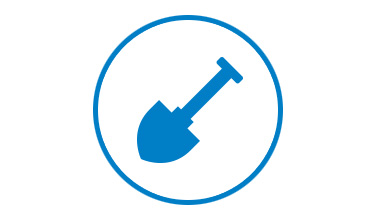 8,538 jobs vs target of 8,100
8,538 jobs vs target of 8,100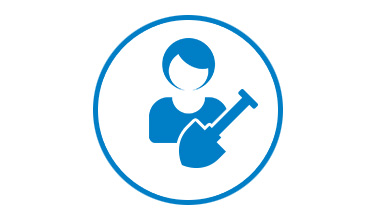 Average increase in business income: 44%
Average increase in business income: 44%Economic empowerment
Published in October 2015, an independent mid-term review of the programme said Hand in Hand’s work with women had been “highly effective”. Members of both sexes who owned enterprises before joining the programme saw their incomes increase by 44 percent, on average, while those without businesses went from earning nothing to earning 1,900 AFN (US $28.50) a month.
Member’s voices
Evaluators interviewed dozens of members, both individually and in groups. “The vast majority… indicated satisfaction with their new income-generating opportunities, and were optimistic about their group and individual efforts to continue their activities following the project’s completion,” they concluded. Most found their new incomes “particularly useful” for putting food on the table and paying children’s school fees. Sara, 47, was one of them.
“We learned how to save, and also learned bookkeeping and specific trades. I know how to read phone numbers and prices now, as well as do basic calculations which I use for my poultry business.”
Zainab, 25, agreed. “Before these trainings, we didn’t know how to even have or develop savings. We didn’t know bookkeeping or how to start a business. Hand in Hand helped us develop these enterprises and have an independent income for ourselves as well as skills in how to continue pursuing these trades.”
Market linkages
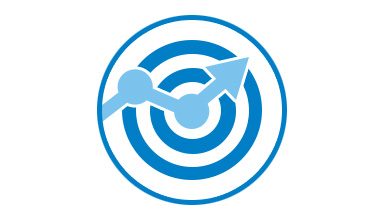
5,518 members trained vs target of 4,300
‘Market linkage’ and ‘value addition’ training is the fourth and final step in Hand in Hand’s job creation model, provided only to those entrepreneurs who have proven their businesses are on solid footing and ready to grow. Hand in Hand Afghanistan targeted 4,300 members for market linkage training at the start of the programme and instead reached 5,518. That’s 28 percent above target. The training will help make sure their businesses continue to grow – merging into co-operatives, linking with international value chains or simply expanding into new territories – for years to come.
Recommendations
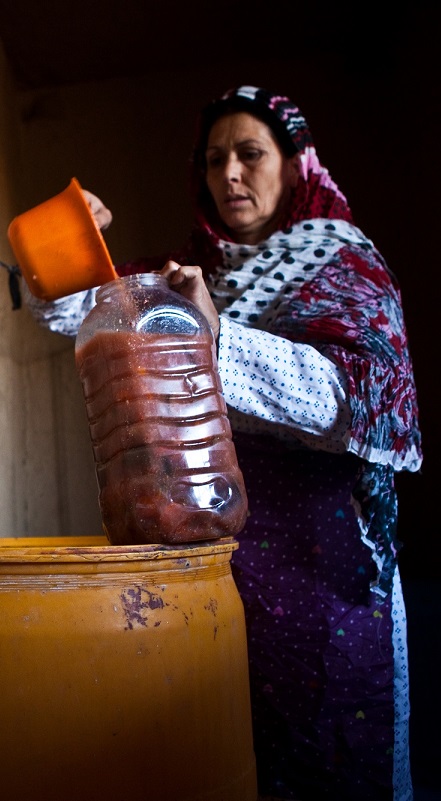 Based in part on interviews with members and in part on their own conclusions, the report’s authors made a number of recommendations, including:
Based in part on interviews with members and in part on their own conclusions, the report’s authors made a number of recommendations, including:
- Continue to engage local communities with “more advanced” training, including courses to help interested members become trainers themselves.
- Expand into new villages, particularly those that have “already attempted to begin their own savings groups, rewarding their initiative.”
Hand in Hand is actively fundraising to do just that. For more information about how you can make a difference, please email Major Donor and Corporate Fundraising Officer Joe Dyson.
- Continue to monitor programme members in years to come.
Hand in Hand Afghanistan’s monitoring and evaluation framework was under review even as Green Growth completed its report. After-the-fact evaluation has been included as a central consideration.
Percy Barnevik on The Social Enterprise Podcast
Hand in Hand Co-founder and Honorary Chair Percy Barnevik appeared recently on The Social Enterprise Podcast, presented by Rupert Scofield, president of Microfinancial Institution FINCA and author of ‘The Social Entrepreneur’s Handbook’.
Here’s a description from the Social Enterprise Podcast website:
“On this special episode of the Social Enterprise Podcast, Rupert is joined by businessman and philanthropist Percy Barnevik. After a successful career in business – chairing companies including ABB, Sandvik, Skanska, Investor AB, and AstraZeneca – Percy founded non-profit organisation Hand in Hand International, inspired to help street children in India. Having worked in 14 countries, the organisation provides grassroots entrepreneurs in some of the poorest places in the world with the skills to start their own businesses. Percy reveals his motivations, some of the challenges, and how business informed his approach to charity.”
Listen to the podcast hereHand in Hand Afghanistan Trustee Kamila Sidiqi on PBS News
Hand in Hand Afghanistan Trustee Kamila Sidiqi – the Deputy Chief of Staff to Afghanistan President Ashraf Ghani – featured on PBS Newshour during a recent trip to the US. Watch the video below.
Edit: Kamila Sidiqi left the Hand in Hand Afghanistan board in December 2015.
If it beads it leads: Hand in Hand entrepreneurs make the Afghan news
When Hand in Hand Afghanistan celebrated its job creation programme in Balkh province earlier this week, local staff and entrepreneurs weren’t the only ones to attend. As the news cameras rolled, speakers including Shahla Hadid, Head of Women’s Affairs in Balkh province, and Gululai Hotak, Head of the Department of Work and Social Affairs, took turns praising the programme, which wrapped up this month.
The real stars, however, were the entrepreneurs themselves, many of whose products went on display. Watch video below, then visit our Hand in Hand Afghanistan page to learn more about our work in the country.

